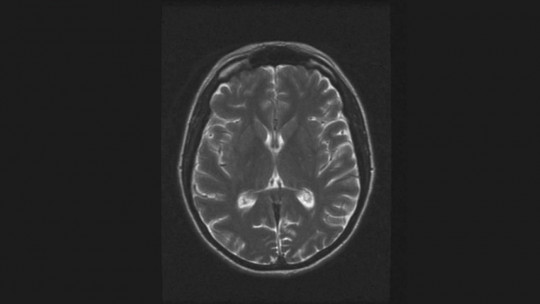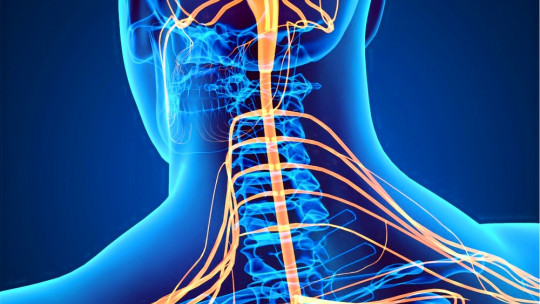
Among the diseases categorized as rare we find MELAS Syndrome, a strange condition which, in Spain, only affects less than 5 every 100,000 people over 14 years of age. This alteration of mitochondrial origin seriously affects the neurological functioning of the person and its symptoms manifest until the moment of death.
Throughout this article we will describe in detail what this hereditary disease consists of, as well as what its symptoms are, where the origin of the condition is located and how possible treatments are carried out.
What is MELAS Syndrome?
MELAS Syndrome is a strange hereditary mitochondrial disease whose main characteristic is the generation of a series of neurological disorders Mitochondrial category conditions cause certain neurological disorders in the person caused by a mitochondrial genomic mutation.
Mitochondria are cytoplasmic organelles formed by eukaryotic cells, whose main mission is to generate energy through the consumption of oxygen. This organelle is essential for the metabolism of our cells, so any alteration in it can cause serious complications in the person’s health and quality of life.
This syndrome was described for the first time in 1975, but it was not until 1984 when it received its current name. The term MELAS consists of an acronym for its most distinctive clinical properties:
In its first description, MELAS syndrome was described as a set of seizure incidents, gradual language degeneration, lactic acidosis, and muscle fiber tearing
The first symptoms of this condition usually appear during childhood or adolescence, especially between 2 and 5 years of age. Although the development of the disease can vary considerably among those who suffer from it, the prognosis tends to be quite reserved in the vast majority of cases; since patients develop serious health complications until they die.
Regarding the incidence of MELAS Syndrome, this is a very rare condition among the population. Although specific data on its prevalence have not been established, it is known that It is one of the most common mitochondrial diseases On the other hand, a higher prevalence has not been demonstrated in men or women, nor in any specific ethnic or racial group.
What is the clinical picture?
As we have previously pointed out, MELAS Syndrome is distinguished by having three main characteristics that make up its clinical picture and differentiate it from other mitochondrial diseases.
1. Mitochondrial encephalomyopathy (ME)
Encephalomyopathies are those diseases whose origin is found in alterations in the structure and functioning of the central nervous system, which tend to cause quite frequent seizure episodes.
These episodes consist of temporally delimited events during which the person experiences exaggerated motor agitation, spasmodic and involuntary muscle activity, and changes in the state of consciousness and perception. A distinction can be made between focal seizures and generalized seizures In focal seizures, abnormal brain electrical activity is usually restricted to a specific area of the brain, while in generalized seizures, the discharge patterns extend to various brain areas.
The danger of these epileptic seizures lies in the risk that the different affected brain structures will be permanently damaged, generating serious consequences at a cognitive and motor level.
2. Lactic acidosis (LA)
The lactic acidosis present in MELAS Syndrome consists of a abnormal accumulation of lactic acid When this substance, generated mainly in red blood cells and muscle cells, agglomerates in a pathological manner, it can give rise to a series of very serious health problems that can end up causing the death of the patient.
The main signs that indicate a buildup of lactic acid include vomiting, diarrhea, nausea, gastric pain, prolonged drowsiness alterations in the state of consciousness, respiratory problems, hypotension, dehydration and deficits in the supply of blood and oxygen to muscles, tissues and organs.
3. Stroke-like (S)
The stroke-like concept refers to stroke-like events
A stroke is a focal and spontaneous event in which blood flow to a specific area of the brain is interrupted. When this occurs for more than a few seconds, brain cells begin to deteriorate and die due to lack of oxygen and nutrients.
The main consequences of these strokes are alterations in the visual system, language and motor skills, as well as a gradual cognitive deterioration that can lead to dementia
What symptoms does it present?
In MELAS Syndrome, the clinical picture described above is accompanied by symptoms that, despite presenting very differently among patients, usually appear in the vast majority of cases.
These symptoms include:
Other less common symptoms, but which can also appear during the course of the disease, are those related to the mental and psychological state of the person. These symptoms can be:
What causes does it have?
As mentioned at the beginning of the article, MELAS Syndrome is a disease caused by a mutation in mitochondrial DNA Therefore, it is a hereditary condition that is transmitted from the maternal genes.
These alterations occur in a series of specific genes located in the genetic material of the mitochondria. Most of these specific genes are responsible for transforming oxygen, sugars and fats into energy; while some others are involved in the production of tRNA molecules responsible for the construction of amino acid structures.
What is the treatment and prognosis?
At the moment, a specific treatment for MELAS Syndrome has not been developed, but specific treatments are carried out for each of the symptoms that the patient presents, as well as a series of palliative care to improve their quality of life.
Within the usual protocol, a group of specialists, including neurologists, cardiologists, ophthalmologists, or endocrinologists, among many others, is responsible for developing a specialized treatment that adapts to the patient’s symptoms and needs.
Unfortunately, these treatments do not completely alleviate the effects of this condition, so the person usually presents progressive cognitive deterioration, followed by psychomotor problems, decreased hearing and visual abilities, and a whole series of medical complications. until the death of the patient.








